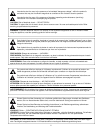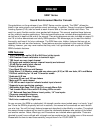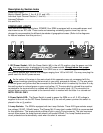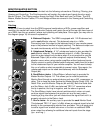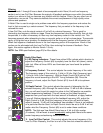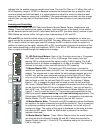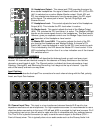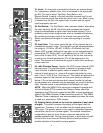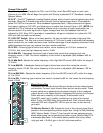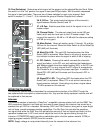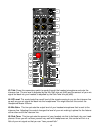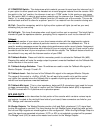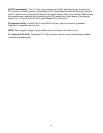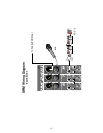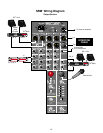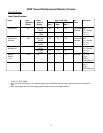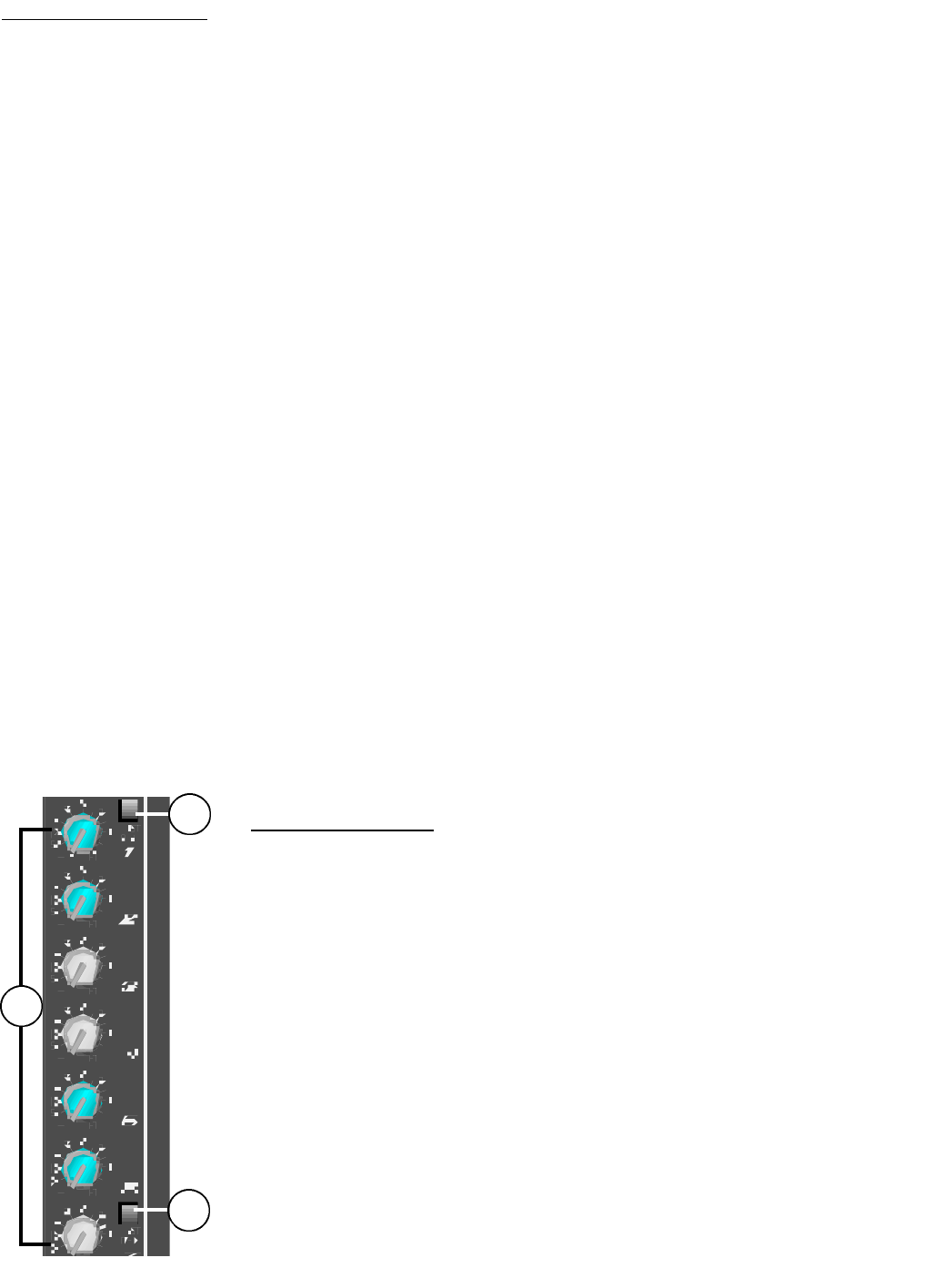
Channel Filtering/EQ
The following section will explain the FLS
®
, Low Cut filter, and 4-Band EQ found on each input
channel of your SRM. We will begin the section with Peavey’s patented FLS
®
(Feedback Locating
System) feature.
26. FLS
®
: The FLS
®
(Feedback Locating System) senses which channel has the highest signal level
pre-fader. When the FLS determines which channel has the highest signal level it illuminates the
yellow FLS LED for that channel. Since feedback regenerates itself, it often produces the highest
level signal, lighting an FLS LED, and allowing you to adjust that channel’s level or EQ. (NOTE: It is
possible for FLS to indicate a non-feedback channel since it monitors all audio levels within the
channel section. Any audio signal with a higher average level than the feedback itself will be
indicated by FLS. Since FLS is pre-fader it is possible to still get an indication on a channel’s FLS
LED even with the fader turned down.)
27. LOW CUT Switch: When in the down position, the low cut switch activates a high-pass filter
within the channel. This filter has a corner frequency of 75 Hz and is used to eliminate low frequency
signal content such as rumble and wind noise. Another advantage of low frequency elimination is the
added headroom that you may receive from your monitor amplifiers.
28. Hi EQ: A shelving type of active tone control, corner frequency at 12.5 kHz, centered at
12.5 kHz, that varies the high frequency levels ±15 dB.
29. Hi Mid EQ: A bandpass (boost/cut) type of active tone control that varies the high mid
frequency levels ± 15dB. The center frequency of this control is adjustable (#30) between 500 Hz
and 15 kHz.
30. Hi Mid Shift: Adjusts the center frequency of the High Mid EQ control (#29) within the range of
.5-15 kHz.
31. Low Mid EQ: A bandpass (boost/cut) type of active tone control that varies the low mid
frequency levels ±15 dB. The center frequency of this control is adjustable (#32) between 100 Hz
and 3 kHz.
32. Low Mid Shift: Adjusts the center frequency of the Low Mid EQ control (#31) within the range
of .1 to 3 kHz.
33. Low EQ: A shelving type of active tone control, centered at 80 Hz, that varies the low-frequency
levels ±15 dB.
Meters/Controlling
This section will describe the ten Monitor Sends and their related meters
and controls. For each input channel there are ten monitor sends. These
monitor sends are numbered and correspond directly to the numbered
outputs found in the Master Section. A separate Pan control and Channel
Fader add more versatility to the outputs. A mute switch and a
Signal/PFL switch aid in audibly monitoring on a channel-to-channel
basis. Finally, the SRM offers visual aids as well. Each channel offers a
mute/clip LED and a Signal/PFL LED so you can see, as well as hear,
your work.
34. Monitor Sends (1-10): Adjusts the level of the channel signal that is
placed on the corresponding monitor output bus. Using the Post Switches
(#35), Monitor Sends 1-6 and 7-8 can be split into two separate groups
where either group can be selected pre-fader or post. Monitor Send 9/10
is dedicated post-fader. In the center detent position this control offers
unity gain and +10 dB of gain in the full clock-wise position.
10
35
34
35



